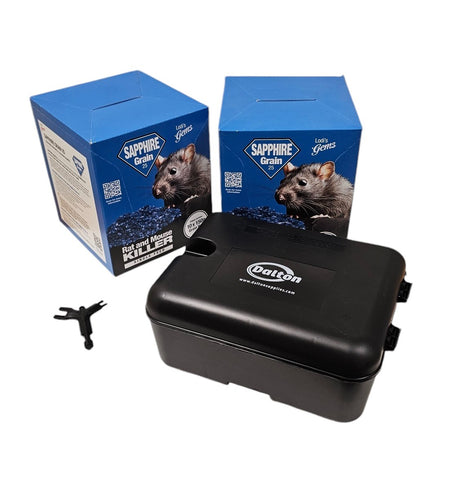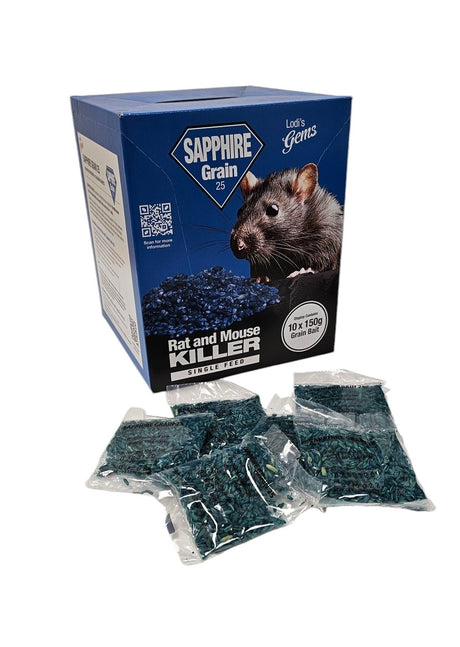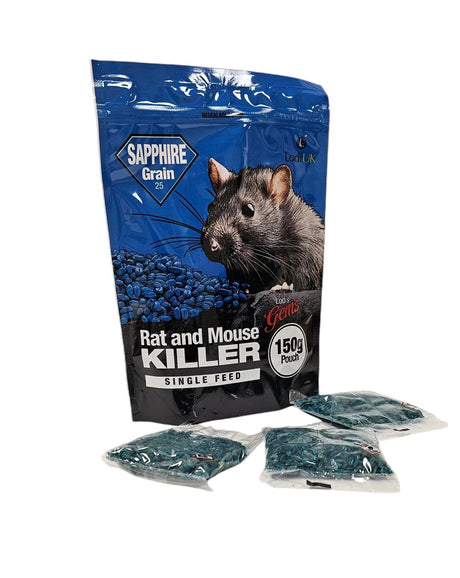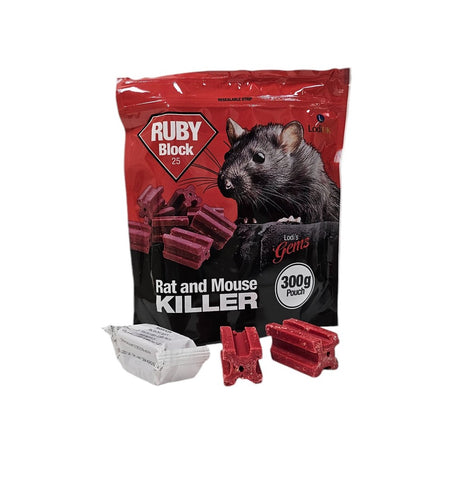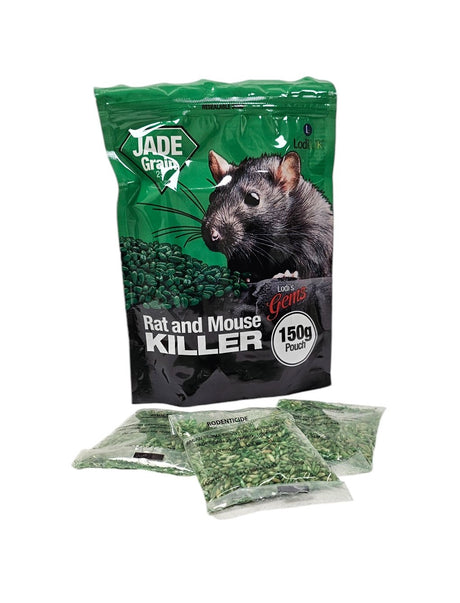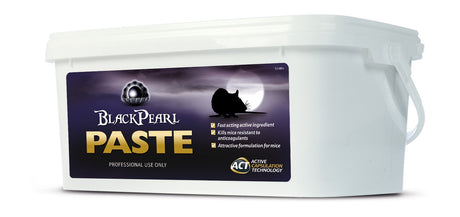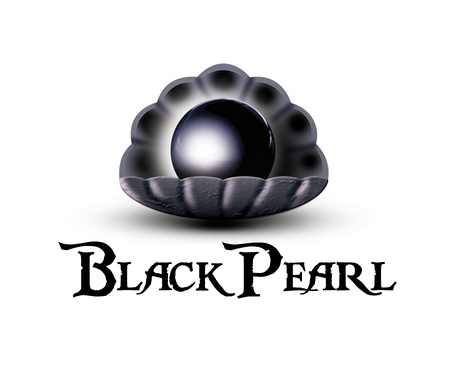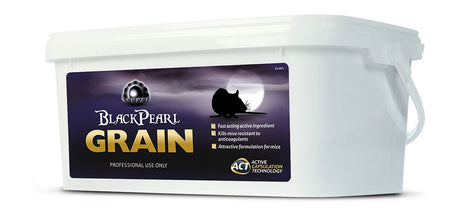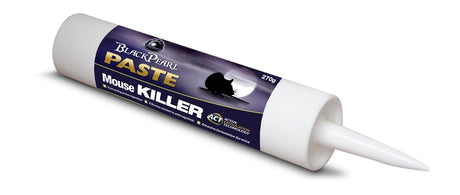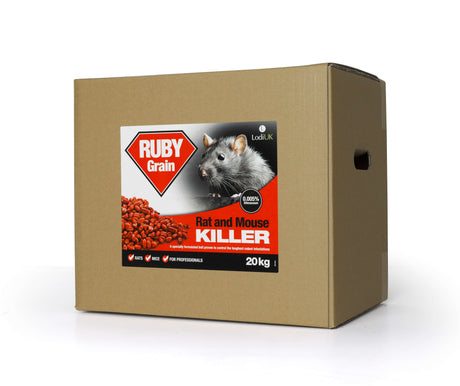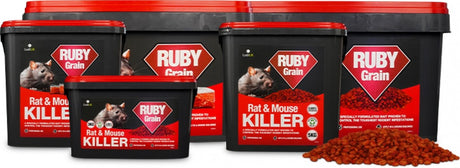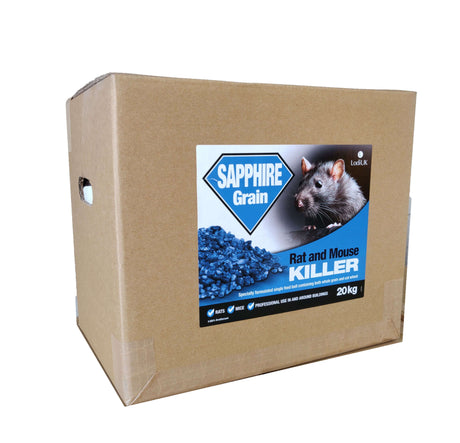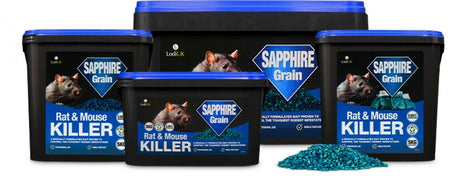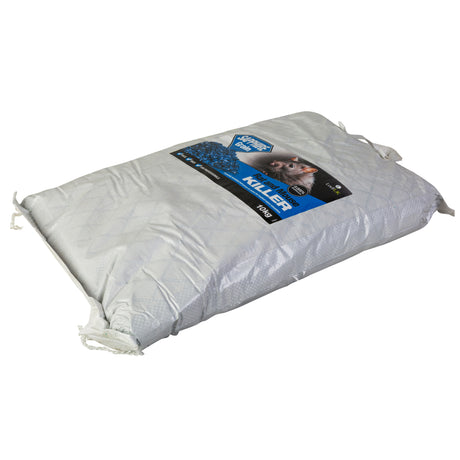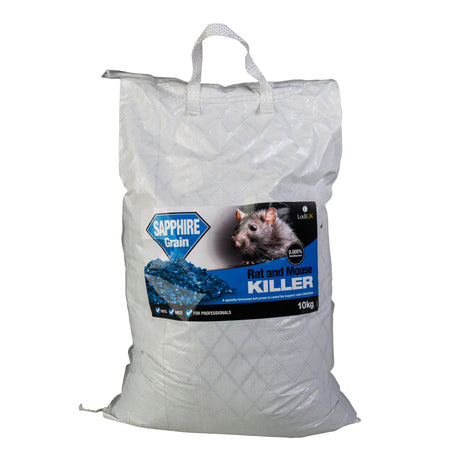If you are dealing with rodent problems in your home or property, it can be very tempting to choose rat poison as the first solution for pest control. Before doing so, it's important to learn all there is to know about this lethal dose of rodent control. When you kill rats using toxic rodent baits, there's a risk that you could harm other nearby humans and animals or pets as well.
Rodent poison uses three different types of rodenticides: calcium releasers, acute toxins, and anticoagulants. Because there's a high accidental poisoning rate with acute toxins, only one type, called bromethalin, is safe for use near a home. However, there's a lot you should know about this substance before using it.
We'll cover important information about rodenticide and this pest control method below.
How Does Rat Poison Work?
Poisoned bait features a rodenticide plus a delivery mechanism for the bait station. Typically, it is sold as pellets, seeds or grains, or powders that mix into water or paraffin blocks.
The way the bait works depends on the rodenticide used.
Here are your rodenticides options:
- Bromethalin: This poison induces brain swelling. Side effects include incoordination, seizures or tremors, or paralysis. At a mitochondria level, bromethalin shuts down the rat's ability to produce any energy.
- Zinc and aluminum phosphate: These two poisons are acute toxins. They're only approved for uses in agriculture to commonly treat gophers or moles because of their potency. These toxins are extremely dangerous. They cause heightened production of phosphine gases in the stomach. If the poisoned animal vomits, the toxic gases can be exposed to any nearby people or animals, causing irritated lungs and other side effects.
- Vitamin D3: These rodenticides mostly cause phosphorous and calcium overdose. When the body experiences high levels of these minerals, acute and severe kidney failure occurs. This is a popular option of rodenticide because it doesn't carry any risk of second generation poisoning of other animals that may use the dead rodent as a food source.
- Long-acting anticoagulants (LAACs): Another rodenticide option is an anticoagulant. What these do is inhibit blood clotting, which leads to internal bleeding. They mimic certain blood thinners for humans. Often, the rodent needs to consume multiple doses of an anticoagulant to be effective.
Is Rat Poison Effective?
Rat poison is a very effective method for handling rat infestations. However, you should only use it as a last resort when other rat control methods like trapping have proven ineffective.
You should only use rat bait if the inside of the house is rodent-proofed so that sick rodents are unable to enter. Tamper-proof baits should be used to keep the chances of accidental poisoning to other animals at a minimum. It is best to consult with a professional before using bait indoors.
Once rats have been poisoned, they will try and escape their hiding places in search of dehydration or other ailments. This presents a risk to other predators nearby. If a rodent is too weak from the toxins, they won't escape the walls or out of reach hiding places. Should rats become trapped within walls or interior spaces in the house and die, they can cause an unpleasant odor.
Is Rat Poison Safe for Other Pets?
All rodent poison is incredibly toxic to people and animals, including other household pets, if consumed. Always use precaution when trying this form of pest control.
Also, many types of rat poison remain inside of a deceased rodent. This means that any animal that eats dead rats could also get sick or die.
You must place any rat bait station where other animals and wildlife, pets, or children cannot contact it.
Rat poison has major side effects for the animals that may prey on the dead rats or eat the bait themselves. Rodenticide side effects are worth knowing, especially if you have other pets around that could accidentally ingest the bait, or the dead rodent could be a potential snack to your pet.
Here's what you can expect from rodenticide poisoning in people and animals:
- Headache
- Drowsiness, weakness, and fainting
- High temperature
- Stomach ache
- Loss of appetite
- Fever
- Diarrhoea
Frequently Asked Questions
What Does Rat Poison Look Like?
Rat poison can be found in various forms and colours, including green, blue, tan, pink, and red. Typical formulations include pellets, bait blocks, powders, pastes, grains, gels, liquids and soft baits. It is essential to identify these diverse appearances to ensure proper handling and to safeguard against accidental ingestion by other animals.
Conclusion
If you are considering rodenticide as a form of pest control, it's important to take as much precaution as possible. Also, consider trying other methods like trapping that don't require the use of toxic chemicals.
If there are animals or people nearby, always make sure that you're administering the rat poison outside of your home and sealing indoor entry points before doing so. You don't want the rodents dying in a hard-to-reach place.
Be vigilant for the signs of toxication in other people or pets when using these rodenticides.




